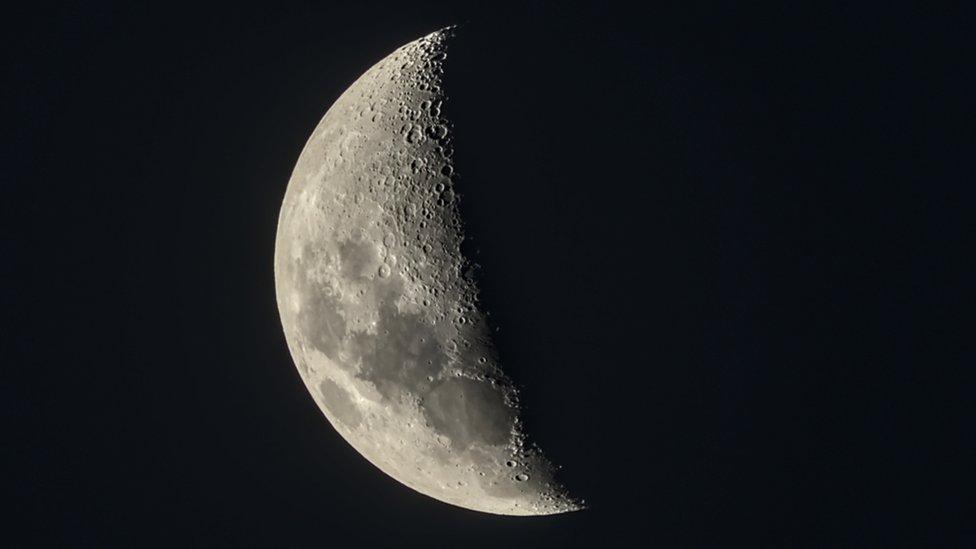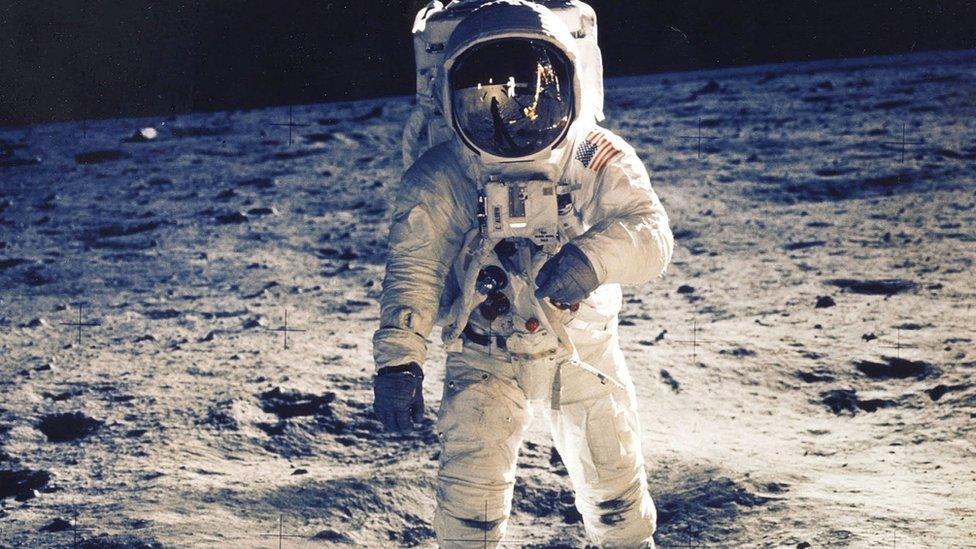Total solar eclipse: Rare event takes place in Antarctica
- Published
- comments
Watch Antarctica's solar eclipse - sped-up!
Antarctica experienced a spectacular total solar eclipse over the weekend.
A total solar eclipse happens when the Moon passes between the Sun and the Earth, completely blocking out the light from the Sun.
It occurs roughly once every 18 months, but each time it can only be seen in certain parts of the world.
Whilst Antarctica was the only place to see the full eclipse, other places in the southern hemisphere including parts of South America, Australia and New Zealand experienced a partial eclipse.
What is a total solar eclipse?

Scientists stationed on Antarctica, looking at a solar eclipse
For an eclipse to be total, the Sun, Moon and Earth must be directly aligned.
This casts a shadow over part of the Earth. The area on the Earth where the shadow directly falls, is the point at which people will be able to see a total solar eclipse.
This is because the Moon will be completely blocking the sun's light, so it will fall dark for a short time just like it's night time - even if it is the middle of the day!
Unlike lunar eclipses which usually last for a few hours, solar eclipses are much shorter in length and only last for a few minutes.

Antarctica was the only place on the planet to experience a total solar eclipse this year!
What makes this eclipse more unique is that Antarctica is currently experiencing its summer (which lasts from about October to February), when the sun is nearly always in the sky and there is hardly any darkness.
Therefore, this eclipse brought the only real darkness that Antarctica will experience until the sun starts setting there again around March next year!
The next total eclipse on the southern most continent will not take place until 2039, whereas here in the UK, we will need to wait a little longer in order to experience one ourselves - the next one won't take place until 23 September 2090!
- Published15 June 2021

- Published16 July 2024

- Published20 July 2019

